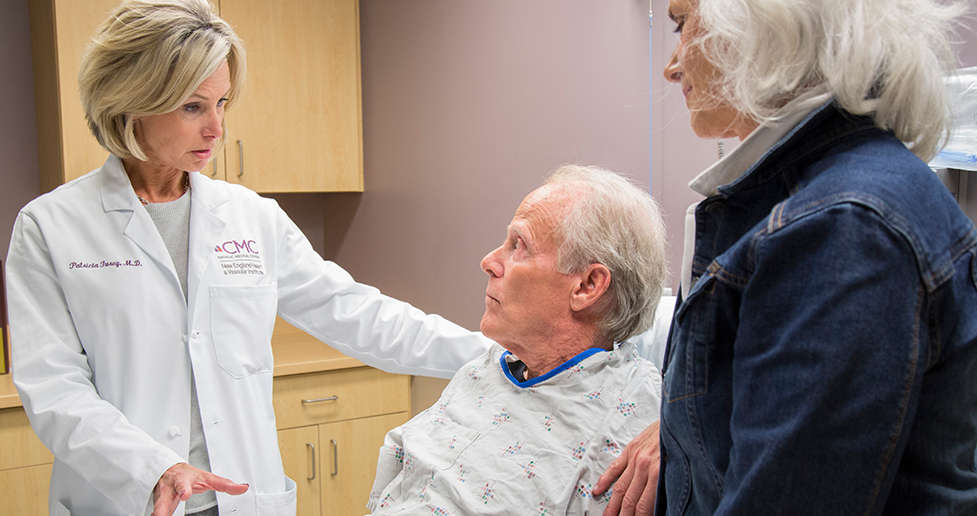Peripheral Artery Disease (PAD), also known as peripheral vascular disease (PVD), is a progressive circulatory disorder. PAD occurs when plaque builds up in the arteries, a condition called atherosclerosis, which narrows and hardens the arteries over time, reducing blood flow and potentially causing damage to tissues or organs.
Patients with PAD often experience symptoms such as leg pain during walking, numbness and tingling in the feet, difficulty walking, night-time foot pain, and sores that do not heal.
Several factors increase the risk of developing PAD:
- Age (over 50)
- Obesity
- High blood pressure and/or cholesterol
- Family history
- Smoking
- Diabetes
- Heart disease
- History of stroke
- Lack of exercise
- Poor diet
Symptoms of PAD may include:
- Muscle pain when walking
- Numbness or heaviness in the legs
- Leg cramping
- Weak pulses in the legs or feet
- Wounds that do not heal
A sudden cold, painful, pale limb with weak or no pulses is a medical emergency. Seek immediate medical attention.
For more information, contact CMC's Vascular Nurse Navigator by calling: 603.665.5154
Recommended resources:
Info for patients from the Society for Vascular Surgery
PAD When to contact doctor about leg pain
Why choose CMC?
Our vascular physicians, physician assistants, nurse practitioners and support staff bring extensive expertise and skill to each procedure, and take a personal interest in your well-being.
Lifestyle Adjustments and Medications
If you’re diagnosed with PAD, your provider will likely recommend a healthier lifestyle to help keep the disease from progressing. This may include losing weight, quitting smoking, and exercising. Medications are also available to help reduce symptoms and improve blood flow in the legs and medications that relax vessel walls.
Interventional and Surgical Treatments
Several procedures can help improve blood flow in patients with PAD, including angioplasty and stenting. Angioplasty involves a balloon inserted into the artery through a small tube called a catheter which the doctor inflates to clear the blockage. A stent is small a mesh tube that stays in the artery and helps keep it open. Certain cases may be suitable for an atherectomy, which uses laser technology to dissolve the plaque that’s blocking the artery. In some situations, vascular surgery may be appropriate to help restore blood flow.
Failure to treat PVD may result in a loss of limb (amputation), poor wound healing, decreased mobility, pain or stroke.
PAD is similar to coronary artery disease. Plaque builds up in an artery which diminishes blood flow over time. Eventually, that diminished blood flow can cause organ damage or failure. PAD can involve many organs throughout the body, depending on which artery or arteries are involved. The most common types of PAD include abdominal aortic aneurysm, carotid artery disease, and vascular disease in the lower extremities.
In many aspects, this can be a silent disease. Visual problems, high blood pressure, and trouble walking may be symptoms of PAD. Poor wound healing, toe discoloration, cool skin or sores on the legs can also be signs of PAD. Symptoms need to be considered in light of risk factors such as increasing age, smoking history and high cholesterol in order to determine whether testing is needed.
Smoking is a significant risk factor. Other important risk factors include:
- Diabetes
- Kidney failure
- Coronary artery disease
- High blood pressure
- High cholesterol
There are screening tests for PAD which include a carotid artery screening to detect patients at risk for stroke, and an aneurysm screening is available for patients, if needed.
Interventions depend on symptoms. If someone's main complaint is leg pain, we can treat that with supervised exercise programs and medication to improve walking. Lifestyle, diet, and certain medications can help lower blood pressure and cholesterol. More severe symptoms may require interventions including angioplasty, stenting and possibly surgery.
First and foremost, a patient should talk with their primary care provider, especially if they think they might be at risk for PAD. At CMC's Vein & Vascular Specialists, we want our patients to understand that we are here to be their resource and provide information. Our expertise lies in our ability to not only treat their condition but also answer all of their questions.

